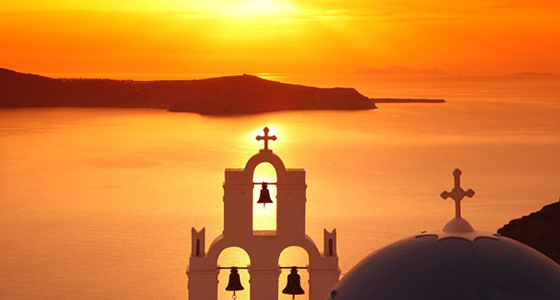Catholics and Orthodox: What Separates Us?

When my parents divorced, I had to choose between them—but it’s not what you think!
Please afford me the chance to explain before you jump to conclusions.
Many years ago, my father and mother were married and deeply loved each other. But over time, difficulties arose between them, which caused a slow deterioration in the health of their relationship and, eventually and regrettably, divorce. And worse, their separation had the unintended result of dividing my brother and me from each other, as each of us chose a different parent to live with.
My brother and I now have two different lives with very different backgrounds, each stemming from the parent each of us chose. You’ll probably agree that children shouldn’t have to make such decisions because of the failures of their parents.
Now, you may think I’m talking about my biological father, mother, and brother. And maybe I was . . . but I’m also referring to my spiritual father, the Catholic Church; my spiritual mother, the Eastern Orthodox churches; and my spiritual brother, my Orthodox lay brethren. As a Catholic who has been Eastern Orthodox, both of my spiritual parents are responsible for who I am today. As such, I deeply desire to see unity between my parents. I have even dedicated my life to it.
Before there can be healing and unity between Catholics and Orthodox, we must examine what led to the separation, much like a couple who wish to restore their relationship. After all, if the cause of a medical disease is not discerned, it is unlikely that the proper remedy will be provided. So, it is with the Catholic and Orthodox divide.
Examining this history will also help Catholics, Orthodox, and Protestants to be more familiar with how we ended up in the state of separation we are in today. Familiarity with this will help them further determine that the schism was unjustified and should not be perpetuated by their actions.
Sadly, when surveying the relations between Catholic West and Orthodox East, we quickly observe a long and drawn-out history of friction and deterioration. In the same way a divorce can be the result of a long and subtle breakdown in communication and relations between a husband and wife, so too it is with the Catholic and Orthodox divide.
We start to see tremors of this division as early as the second century, where Pope St. Victor I (189-199) threatened to excommunicate the churches of Asia minor over a dispute about the proper date of Easter. Some claimed they had a tradition from the apostles that Easter should be on the fourteenth of the ancient Jewish month of Nisan, whereas others claimed that it should be on whatever Sunday fell after the fourteenth of Nisan. This was patched up after several figures, including St. Irenaeus, engaged in some skillful East-West diplomacy.
Sadly, there were many other divisions to come after this event.
These came to a head in the eleventh century.
It was in the eleventh century that many of the underlying tensions from previous centuries came to a swelling point. Constantinople dropped Rome from the diptychs (a list of those alive and dead whom the Church commemorates), which meant they no longer recognized the pope as being in communion.
Inquiries made into the matter showed that this was simply a reality, rooted in fact more than any canonical decision. When Pope Leo IX (1049-1054) sent Cardinal Humbert (1000-1061) to Constantinople in 1054 to resolve the dispute, tempers were lost, theological polemics were exchanged, and eventually the cardinal and patriarch excommunicated each other. This was not a moment where all of the Eastern churches severed ties with Rome, though it is often portrayed that way in popular circles, but it certainly impaired relations with the West.
There is too much history to dig into here. But you can get the whole story when you pick up a copy of Michael Lofton''s brand-new book Answering Orthodoxy
Recent Posts
-
Are We Superior to the Early Christians?
If the early Church was the Catholic Church, why can’t we say that Christians just lost their way ea …Jul 15th 2024 -
Did the Early Christians Get Things Wrong?
You can find countless variations of the claim that early Christians believed Protestant things: …Jul 1st 2024 -
How to Respond When the World Tells Us We Can "Build Our Own Deity"
The necessity of revelation and of knowing God on his terms is not accepted in our culture today. A …Jun 22nd 2024









